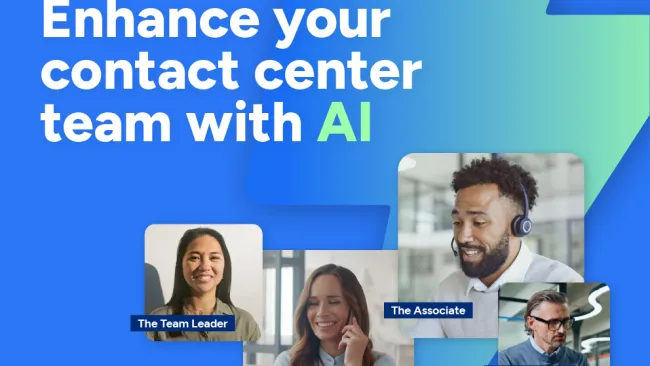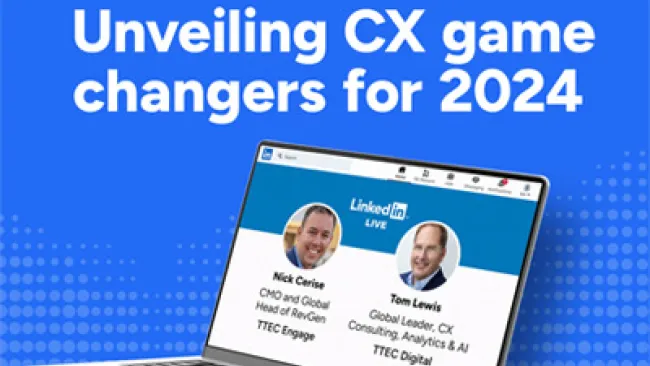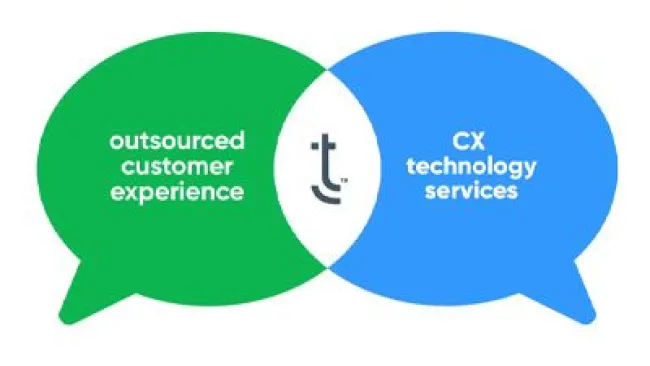Customers are using an ever-growing arsenal of digital channels to reach out to companies for support, often mixing and matching what they use even in the same interaction. Unfortunately, companies struggle mightily with delivering seamless omnichannel customer experiences to meet these needs. So much so, in fact, that 87 percent of consumers believe brands need to put more effort into providing smooth omnichannel experiences, according to a study by Zendesk.
There are strong business incentives for doing so. According to Aberdeen Group, companies with strong omnichannel customer engagement retain on average 89 percent of their customers, compared to just 33 percent for companies with weak omnichannel engagement capabilities.
Omer Minkara, research director of Contact Center & Customer Experience Management at Aberdeen Group, closely tracks omnichannel customer service trends and best practices. We caught up with him to get his thoughts on the latest contact center challenges and opportunities around omnichannel.
Customer Strategist: Generally speaking, how well are enterprise companies handling omnichannel customer care?
Omer Minkara: On a scale of one to 10, I would say a three. We see only 30 percent of companies out there that have the fundamental building blocks of omnichannel customer care with a single view of customer data across the enterprise.
Many companies like to think that they are omnichannel when they are multichannel focused. One recommendation I would have to companies is to stop thinking about how many channels they have in their channel mix and think instead about whether they’re using the right channels used by their customers and how they’re used.
CS: What has Aberdeen Group found in its recent research on the topic?
OM: On average, companies are using four channels to support their customers. Those channels vary across different businesses. Even having two or three channels in many occasions isn’t enough to differentiate. It’s table stakes. The key is to personalize communications with customers in each of these channels.
Forty to 45 percent of companies indicate that the ability to provide consistent interactions across all of these channels is a challenge. This includes the ability to gain a consistent view of customers across channels.
Companies need to provide associates in the contact center and sales and marketing associates with the information they need to provide effective interactions with customers. Otherwise, it leads to unnecessary costs in the business.

CS: What are the primary gaps that need to be addressed?
OM: Obtaining a unified view of customers. That’s the number one challenge our clients tell us they struggle with. They don’t know how to go about obtaining that unified view across live chat, email, social, etc.
Then comes the ability to integrate new technologies. Companies are struggling to incorporate newer channels such as text messaging in their channel mix.
CS: We often hear about the challenges that companies encounter in providing customers with “seamless” omnichannel experiences, including the ability to move easily from one channel (mobile) to the next (voice) for support without the customer having to repeat himself. Can you offer some recommendations for addressing this disconnect?
OM: There are two aspects to this. Process and technology.
From a process standpoint, we recommend first identifying the sort of workflows needed to ensure that employees have real-time views of customer data. Chances are, the customer experience process updates across the enterprise are not catching up to the speed of the buyer.
To do that, database management and other comparable tools can enable companies to scrub the data and cleanse the data so that you have clean and up-to-date data for accurate customer insights.
From a technology standpoint, a unified associate desktop can provide associates in the contact center with a complete view of the customer so that they don’t have to ask a customer multiple questions.
CS: What are some ways in which companies can better use customer data from different channel interactions to provide customers with more intelligent care experiences?
OM: Segmentation analysis can help place customers in different clusters based on age group, common products they’ve purchased, and other attributes that can be used to identify common qualities of buyers in each segment. This would be complemented with use of analytics to identify trends and correlations as well as do root cause analysis. We also see savvy organizations incorporating predictive analytics that helps them predict, for instance, whether they can expect more sales to come from a particular customer group with a new product launch.
This data and analytics can help companies become more intelligent in how they interact and target customers.
CS: What are some ways that company leaders should be thinking differently about omnichannel customer care?
OM: Two things come to mind. Think about organizational structure. Some companies have a dedicated customer care executive. Roughly 30 to 35 percent of companies have a vice president of customer experience, depending on the industry and company size.
Having someone responsible for overseeing omnichannel programs can demonstrate organizational commitment to omnichannel communications.
Also, expressing to employees the importance of effective omnichannel interactions [is a recommendation]. Point to the importance of delivering effective omnichannel interactions and why it’s important to help them be successful in their jobs.
CS: Do companies need to change their investment allocations for omnichannel customer care?
OM: Many companies don’t have the human capital to handle analytics. That’s an area where more investment should be made. It depends on how effectively the company is executing on omnichannel customer care and where the gaps are.
CS: What are the types of skills contact centers need to address with omnichannel customer care?
OM: Technology skills. It’s important to identify the current skills of each associate so companies can compare them against those that are needed in order to handle conversations across relevant channels.
We see top performing contact centers being slightly more likely to favor using specialist associates who have deep expertise in handling conversations across a few specific channels. That said, there are also plenty of savvy contact centers that rely on blended associates.
Doing a thorough analysis of current associate skills and benchmarking them against requirements to handle current multichannel traffic will be the first step that will help organizations identify priorities on how to handle conversations across all channels.
CS: How do customers fit into omnichannel strategy?
OM: I highly recommend surveying customers and capturing customer feedback to determine which channels buyers prefer to make sure the channel alignment is right. Once you map out the customer journey, what are the missing points that prevent a customer from converting? Behavioral data analysis is another way of understanding customer preferences to get the channel mix right.
CS: What cultural issues should leaders focus on most?
OM: First and foremost, [companies must] fully understand that the customer experience is made up of employee interactions. It’s ultimately humans that are drawing from these capabilities and placing employees at the forefront of communications with customers.
I’ve done some research on the benefits of engaging employees. Companies that fully understand the importance of employee engagement, and have a formal program to ensure that, are not only more likely to retain more customers, they’re also more likely to retain more employees. Employees who feel fulfilled in their roles and committed to attaining their goals will be instrumental in helping organizations convert customer conversations from interactions into relationships.
CS: Which brands are doing an effective job at delivering omnichannel customer care?
OM: One example is Dollar Shave Club. They really understand the importance of having that unified view of customer data. A key focus area for them is having a consistent view of the customer interaction history and to use data and analytics to better segment and deliver on customer needs.
CS: What performance metrics should contact center leaders prioritize to measure omnichannel success? Are they different than traditional contact center metrics?
OM: One of the most common metrics I see companies focusing on as they make a successful shift to omnichannel is customer lifetime value. Because over time, how effectively you deliver omnichannel customer care relates to the development of the customer relationship and whether customers are spending more or less through the course of their conversations with the business.
Customer retention is also important. Customers are voting with their wallets and if they leave, you’re not doing a good job with customer experience.
















